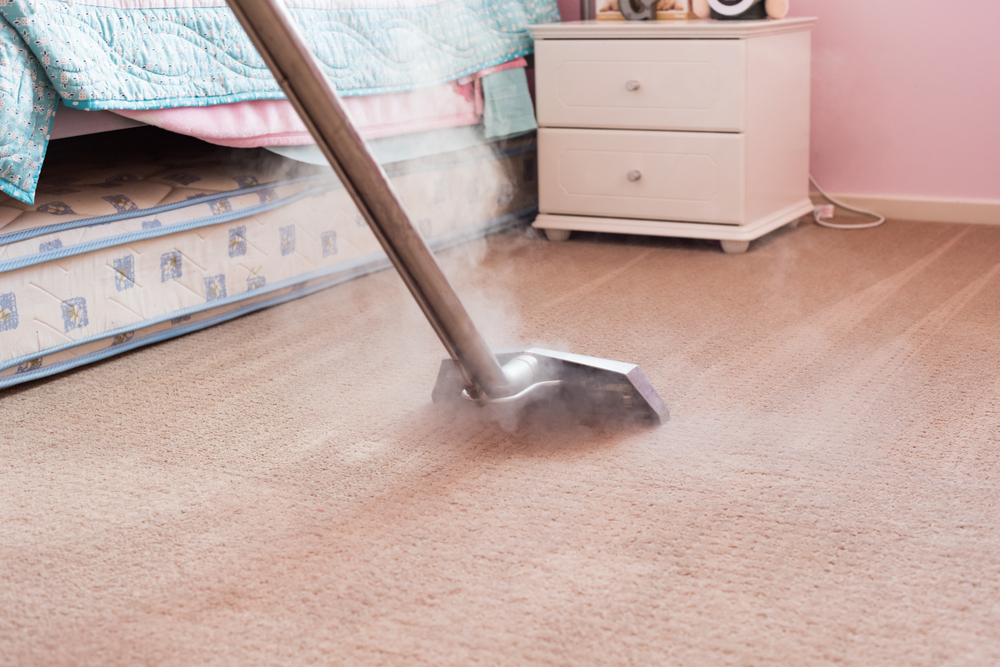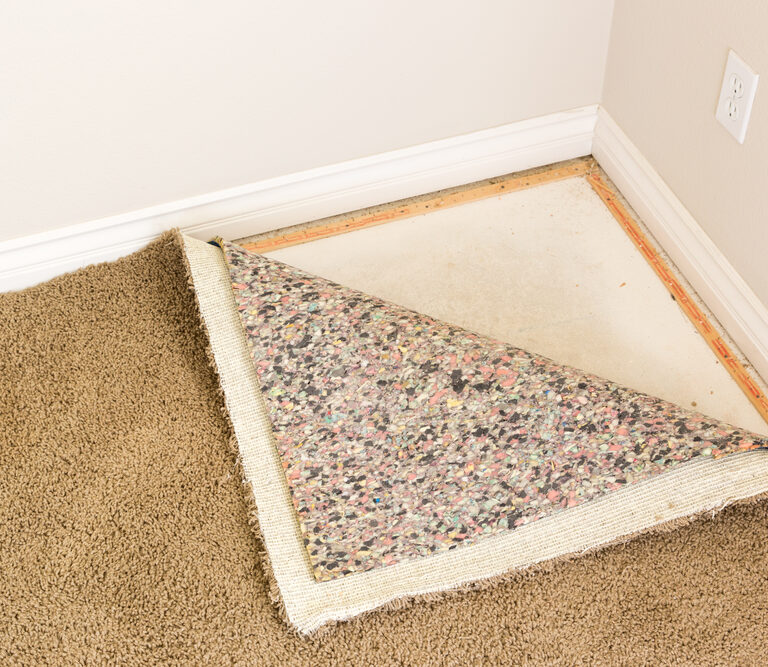Mold is an unsightly and malodorous menace that can crop up almost anywhere in the home. No surface is safe, though it is especially prevalent in areas of persistent damp and moisture. While many species of mold are harmless, there are a few that can cause significant health problems, so it is worth taking the issue seriously.
As a type of fungus, mold reproduces by releasing tiny spores, and it is these spores that cause the unpleasant smell, as well as triggering potential health problems when inhaled. On a hard surface, such as concrete or metal, mold growth can be easily scrubbed away. Unfortunately, when it comes to carpets, the size of these microscopic spores are what make infestations of mold stubborn.
Read on, and we’ll explain why and how mold growths occur. Additionally, and more importantly, we’ll show you how to get rid of them quickly and thoroughly.
Why Does Mold Growth Occur?
We’ll start with how mold growth occurs. As explained, molds are a type of fungus and, as such, reproduce via spores. These spores are incredibly hardy and incredibly small, carried on air currents to spread through the environment. It is almost impossible to filter for them in the regular home, and they are present nearly everywhere.
The reason why mold doesn’t grow out of control is that it is dependent on finding areas of moisture where it can propagate. This is why you see and smell it most often in garages, basements, and other places where the air is stagnant and unheated.
This is a particular problem for carpets as, by their nature, they have many nooks and crannies that can wick up moisture and trap it. It is extremely difficult to dry a wet carpet thoroughly and, if that dampness finds its way beneath the padded underlay, it’s almost impossible without a lot of effort.
Should I Be Concerned?
Molds come in a variety of species, most often appearing as gray, green or black growths. These are unsightly, but for many people the primary issue is the lingering smell they cause. A hidden patch of mold can fill a room with a damp and musty odor. This can vary in intensity and, if it is mild, you may be tempted to ignore the problem.
We strongly recommend that, if you suspect mold is present in a living space, you deal with it as soon as possible. Some species can cause serious health issues; even those that are considered harmless are a danger to those of us with allergies. As the growth expands and more spores are released, these problems become more and more likely.
Walking on mold-stained carpet can release large amounts of spores in the air, which is a particular concern for babies and pets, who crawl directly on the ground.
There are a number of places you may not expect mold to be present in your home, and this article by Molekule Science is a good resource on where you might find them.
Prevention
Prevention is the first step in dealing with mold in the home. If you can keep your carpets clean and dry, an infestation is far less likely. Here are a few tips you can follow to prevent mold from taking hold.
- Do not install carpets in rooms you expect will contain excess moisture. Basements, utility rooms and bathrooms, for example, may be particularly problematic.
- Clean carpets using as little water as possible. Favor dry-clean foams or other similar methods.
- Reduce the humidity of your home. This can be achieved through use of heating and ventilation or purpose-made dehumidifiers.
- Dry any spills or flooding as quickly and thoroughly as possible. Never allow a carpet to remain wet if an accident occurs. The sooner the problem is dealt with, the less difficult it is to remedy. If the spill is large, consider lifting the carpet and drying the underlay beneath also.
Preparation
Before you begin the process of cleaning a mold-stained carpet, there are a few considerations to keep in mind. Primarily, for most carpets showing widespread growth, cleaning will not be possible. The affected area should be replaced instead. This is because, in most cases, the task will be too difficult and extensive to complete. A good rule of thumb is that if the affected patch is greater than ten square feet in area, it is not worth trying to clean.
You will also want to consider protective equipment. When a mold growth is disturbed it releases a large amount of spores, so a respirator is advisable. Gloves and goggles are also recommended as protection from the cleaning chemicals you will use.
The EPA has a short guide here on a few of the considerations you should make before you tackle mold in your home, which you might find useful.
Cleaning Mold From Your Carpet
Once you are sure you are well-equipped and can easily tackle the affected area, you can now follow these steps to clean your carpet.
1. Ventilate the room as much as is possible. If you can, remove the carpet for cleaning outdoors. You will want to limit your exposure to released spores, as well as any fumes from cleaning chemicals.
2. Lift the carpet, if possible, and examine whether the underlay has been stained by growth. If it has, you will want to strongly consider replacing the affected area.
3. Scrub the surface with a stiff-bristled brush to remove as much of the visible mold as possible. Do not use a vacuum to do this, as you are likely to spread mold spores throughout your home next time you use it.
4. Spray the area with a suitable carpet cleaning chemical and scrub thoroughly.
5. Allow the area to dry.
6. Sanitize your brush, dustpan and other equipment you have used, using soapy water (if practical).
This is a simple method to make sure your carpet is clean and safe, but you may want to take further steps for extra cleanliness and peace of mind. We will detail some alternative methods below.
Additional Steps

Depending on the equipment you have available, your preferences, and stubbornness of the mold stain, you may want to consider some alternate steps to tackle your problem. Here are a few.
- Baking soda and vinegar may be used instead of harsh cleaning chemicals, and have great effect in killing mold and removing odors. Sprinkle a large amount of baking soda on the affected area, then spray with white vinegar and scrub until the stain is removed. This is only recommended for light growths, however.
- Steam cleaners are an effective alternative or addition, as the heat has been shown to kill stubborn fungi. The steam must be applied to the mold-coated area for at least 12 seconds, then scrubbed to remove the stain. The carpet should then be thoroughly dried, as the moisture from the steam can encourage regrowth.
- Use of a HEPA vacuum is advised to remove spores. These are specially engineered to contain smaller particles than normal vacuums, which would normally only redistribute the spores throughout the room.
- Anti-fungal sprays and chemicals are also an option. You will want to follow the usage instructions on the container, though make sure they are safe for carpet use first.
Common Questions
While we have tried to inform you on the issues involved in tackling this problem, there are a few additional, common questions that arise which we will answer here.
Does Vinegar Kill Mold in Carpets?
Yes, for the most part. Spraying undiluted vinegar on mold will kill 80% of species. You should let the vinegar sit for an hour on the area before scrubbing the area.
Should I Use Bleach to Clean Mold?
While bleach can kill many molds, the EPA does not recommend its use for that task. The dangers of using large amounts of bleach outweigh the potential benefit. You can find an article here with more info.
What Type of Mold Is Dangerous?
All molds can be dangerous for those with allergies, but there are a few that are particularly toxic. The most-commonly known are “toxigenic molds,” and these produce dangerous byproducts that can become airborne. It is not, however, possible to tell if a mold belongs to this group by appearance alone. This article from IQAir goes into detail, for those who are interested.
Happy Cleaning
Following our steps, you should be left with a clean and dry carpet free of odors. You will never be able to rid yourself of 100% of mold and spores, but if you keep your carpet free of moisture the problem should not reoccur. Hopefully, however, should mold rear its head again in your home, you are now sufficiently armed with knowledge to tackle the issue.
Until next time – happy cleaning!
